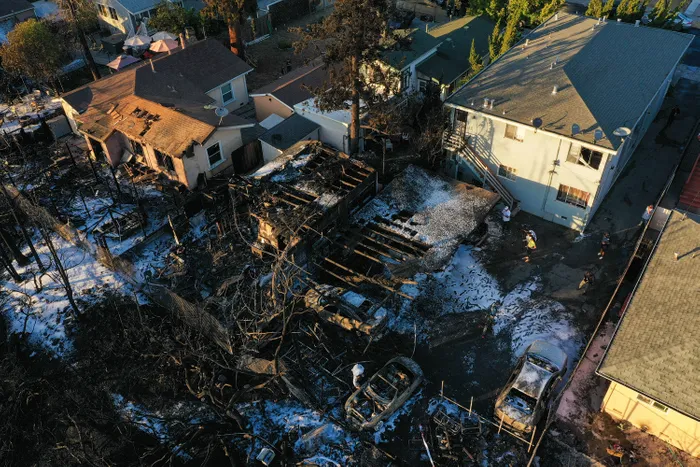State Farm will no longer provide home insurance to new California customers, the company announced on Friday, citing “historic increases in construction costs outpacing inflation, rapidly growing catastrophe exposure, and a challenging reinsurance market.” In other words, it’s getting too expensive to rebuild homes lost to the state’s increasingly destructive wildfires. And the largest property-insurance company in the country retreating from the country’s largest property-insurance market isn’t just an inconvenience for potential homeowners — it’s a sign of what’s to come.
Over the past five years, wildfires have destroyed 25,000 homes in the state; in 2018, the most devastating year on record, Californians filed $11.7 billion in wildfire-related claims. But even when homeowners manage to avoid the flames, they often emerge from disaster only to learn their properties are no longer covered. This phenomenon, called “nonrenewal,” has recently become a problem for mansion-studded, fire-prone communities like Montecito, but it’s also happening in less-wealthy places like Paradise, where the Camp Fire destroyed 90 percent of the town’s homes five years ago. The state has tried to help by creating its own high-risk insurer, offering financial help to build more fire-resistant homes, and announcing new real-estate guidance urging local governments to put mitigation efforts in place to avoid financially calamitous situations for homeowners. (This ends up saving taxpayers money, too: When a neighborhood goes up in flames, the rest of the state shoulders the costs.) But the ultimate solution that would save lives and homes has been a political third rail: The state should simply not allow people to live in high-fire-risk areas in the first place.
California’s insurance dilemma is actually the result of two colliding crises, and one feeds the other. The long-standing NIMBY resistance to denser housing has historically pushed new development into the flammable fringes of cities known as the “wildland-urban interface.” Now, as fire chews through more homes, the state is falling far short of its housing-production goals. In 2020, a particularly destructive fire year, the number of homes that burned was equivalent to one-seventh of the homes built during the same 12-month period. There is a small shift happening: Over the past few years, sprawling developments proposed to boost the state’s housing stock have been rightfully challenged in epic legal battles that intend to stop new housing from being built in areas facing increased fire risk. By one estimate, 25,000 proposed units of housing are being held up in litigation. That housing still needs to be built — just somewhere less likely to become the subject of an insurance claim.
What happens in California is often a harbinger for the rest of the U.S. There’s even a name for this: the “California effect,” whereby policy decisions made here ripple across the country. Insuring the uninsurable in the face of increasingly pervasive climate risk will be a challenge everywhere and not just for wildfires. Incentivizing denser development in cities would deliver a whole bunch of other benefits as well, from reducing carbon emissions to improving air quality — the very climate metrics the state claims to lead on. If California wanted to remain the trailblazer here, its officials would subsidize affordable housing in safer places, instead of supporting an increasingly unaffordable cycle of destruction and rebuilding as its residents stare down what may be the most devastating fire season in years.
Source: Curbed


